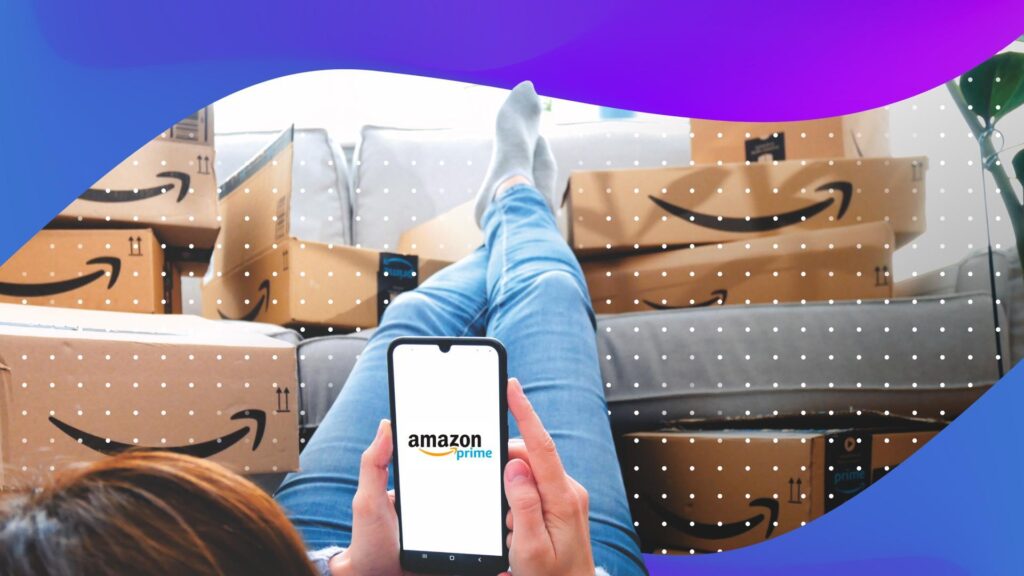
This guest post was authored by Thomas Pruchinski, Director of Marketing for LandingCube, which provides promotional tools for Amazon brands to boost sales & rankings while building customer lists.
Facebook Ads are a powerful tool for Amazon sellers: they can boost sales & rankings on Amazon while building an audience of raving fans for long-term success.
They are typically the most cost-effective and scalable source of traffic outside Amazon itself.
Combining Facebook Ads with a solid Amazon strategy can result in a virtuous cycle, but many brands simply waste ad spend with poorly setup ads.
Here are some best practices for how to promote Amazon products on Facebook – mistakes to avoid, targeting methods and guidelines for optimization.
Why Advertise Your Amazon Products With Facebook Ads?
Facebook has over 2 billion active monthly users. On top of their huge user base, Facebook’s ad targeting tools are quite sophisticated. They allow you to show your ads to people most likely to convert, and thus become customers.
You can even show ads similar to people that have previously bought your products on Amazon with lookalike audiences.

Prepare Your Amazon Products For Facebook Ads
1. Optimize Your Product Listings
Don’t run Facebook Ads if your Amazon listing is not properly set up and optimized. You will be throwing money away.
First, make sure the following are completed:
- Your listing copy is well optimized for both Amazon SEO & conversions.
- You have high-quality product photos & enhanced brand content.
- You are utilizing Amazon’s own Sponsored Products ads.
You want to make sure that the money spent on Facebook Ads works in tandem with things on Amazon. So if things on Amazon aren’t set up well, you won’t benefit as much.

For more info on optimizing your listing, check out The Ultimate Guide to Amazon SEO & Cracking the A9 Algorithm.
2. Set Up A Landing Page
Another big mistake that many Amazon sellers make with Facebook Ads is driving traffic straight to Amazon.
Why is this a problem?
1.Someone scrolling through Facebook is further from purchase than someone searching on Amazon.
2. Traffic from Facebook, in general, is less likely to convert than traffic internal to Amazon, which can decrease conversion rates for your listing.
3. There’s no way to place the Facebook Pixel (to track conversions, build retargeting audiences, etc.) and no way to collect contact information.
An email list is the most valuable asset an ecommerce business can have — something unattainable for most brands that sell exclusively on Amazon.
A landing page for Amazon allows you to:
1. Collect emails (to run future promotions to, ask for reviews, etc.)
2. Place the Pixel
3. Distribute coupon codes to incentivize sales
4. Filters traffic so that those who do reach Amazon or more likely to buy, and thus boost sales velocity & keyword rankings.
Essentially, you want your Amazon Facebook Ads to bring new potential customers into your sales funnel. And over time lead them toward purchase and repeat purchase.

Without a landing page, you can’t Pixel and you can’t collect emails. So if they don’t purchase right after clicking your ad, you lose the ability for future touchpoints.
How to get contact info without a landing page:
One exciting way to stay in touch with customers is with Facebook Messenger.
You can create a Facebook Ad that opens a conversation in Messenger and send a coupon through Messenger, without even using a landing page.

This reduces friction, resulting in open rates & click through rates that are much higher than email.
Messenger sequences are even more powerful than email for collecting reviews, as you can directly ask if they’ve bought the product.
If they have purchased your product, then send them to the review page.
3. Split Test Your Facebook Ads
A mistake often made by brands first learning how to promote Amazon products on Facebook is that they don’t perform split tests.
They create one ad with a single image, copy, headline, etc., targeting one audience.

Regardless of how well you think you understand your target customer, you can and should learn more.
You should take advantage of the data that Facebook Ads accrue over time to test different versions of your ads and to test targeting different audiences.
Don’t just guess, follow the data.
4. Don’t Over Test
Sometimes sellers will test too many variations of their Amazon Facebook Ads.
Ideally, you want your ads to develop social proof – likes, comments and shares will reduce ad costs.
Social proof will be spread across the different ad variations you are testing. Finding the right balance (of enough tests to provide for data-based optimization, but not too many tests to garner social proof) will depend on your budget. But you should pick a winner as soon as a statistically significant result is reached.
Then turn off the other variations so the winner generates more social proof.
5. Structure Your Campaigns Properly For Easy A/B Testing
Some sellers know that they should test audiences, offers & ad variations, but they don’t set up their campaigns to allow for proper A/B testing.
For instance, one of our customers tried testing four different variables:
- Email opt-in vs non email opt-in (to deliver coupon codes)
- Targeting audience
- Ad creative
- Ad copy
This customer set up one campaign and made two different ad sets – one that used a landing page with email opt-in, the other used a landing page without email opt-in. The targeting audience was the same, but different copy & creative was used.
This is not set up to be able to fairly test the variables against each other. Again, email opt-in vs no email opt-in means that the campaign objective is different. So two different campaigns should be made.
You should create two different campaigns that target the same audiences and use the same ad creative & copy.
So the variable is at the campaign level – each campaign has different objectives.
For testing targeting audiences, you want one campaign with two ad sets, each with a different audience, but with identical copies of ads (creative & copy).
To test ad creative or copy, you should have two different ads within one ad set.
Best Practices For Creating Facebook Ads For Amazon
Now that we’ve addressed common mistakes and best practices of using Facebook Ads for Amazon, let’s discuss some positive steps to set your ads up for success.
1. Create A Compelling Offer
The specifics about audiences to target, copy & creative to use, even how long to run your ad for will depend on the offer/goal of your campaign.
The most common type of campaign run by Amazon brands is a high discount promotion to boost keyword rankings.
Such a campaign should be run for only 7-10 days.
You’ll want to make it clear in your ad that you are offering this high discount, without coming off as too salesy. It’s best to optimize this campaign for the Lead event (the Pixel can’t optimize for sales on Amazon).
Here is an example ad for one such campaign:

As you can see, it uses a simple image with short, to-the-point copy. And importantly, the copy focuses on the benefits & value (not simply what the product is / features).
2. Test Lookalike & Custom Audiences
A lookalike audience is when you take an existing list of leads or customers and tell Facebook to show ads to people that are similar to the people on that list.
A ‘layered lookalike audience’ is when you narrow the lookalike audience with additional demographic, behavioral or interest-based criteria.
The audience for the ad above was a 1% lookalike audience from past Amazon customers, narrowed down to people who also were parents of children, were interested in Amazon.com & also interested in outdoor recreational activities.

Narrower audiences can work great for certain campaigns. For others, wider audiences work better. This is why it’s best to always test a few different audiences.
There are many different types of audiences to create. Typically lookalike audiences perform the best, compared to strictly demographic, behavior, and interest-based audiences. But this is not always the case.
I recommend our customers start by creating a lookalike audience from their Amazon customer data.
You can test the following audiences against each other:
- 1% lookalike audience (most closely matching the list)
- 2% lookalike audience
- 1% lookalike layered with demographics/behaviors/interests.
- Strictly demographics/behaviors/interests (essentially a hypothetical profile of your ideal customer)
Run the same versions of ads to each audience to find out which performs better.
Sometimes, there is a clear loser. Turn off the loser and continue running ads to the winner.
This data below, for instance, shows that the lookalike audiences outperformed the cold audience by a wide margin. So the cold audience was turned off.

Want to learn how to create audiences that target your past Amazon customers (custom audience) & lookalike audiences? Watch this video.
The Final Takeaway
Facebook Ads can be an excellent source of growth for brands selling on Amazon. It offers access to a huge user base in a qualitatively different way than internal Amazon advertising.
But often sellers make mistakes that cost them lots of money and limit their success with Amazon Facebook Ads.
By following the guidelines laid out above, you will be well on your way to reaching a wider, qualified audience, making more sales & boosting rankings on Amazon, and building brand assets to position your business for long-term success.
You Might Be Interested In












